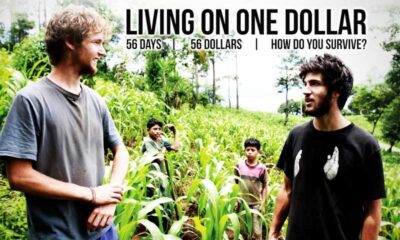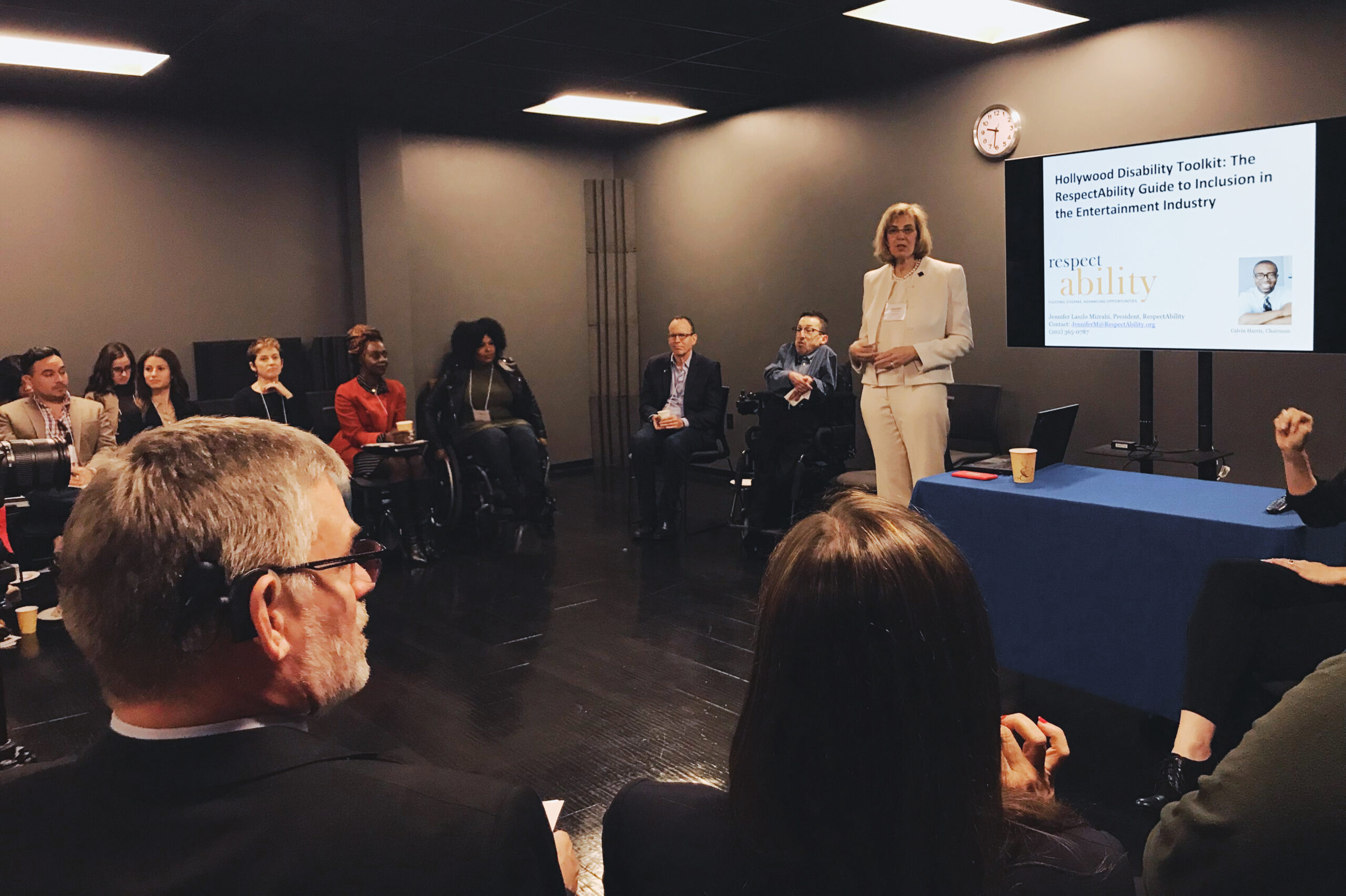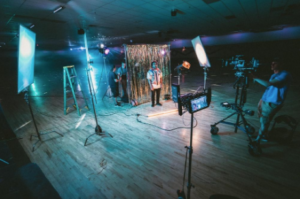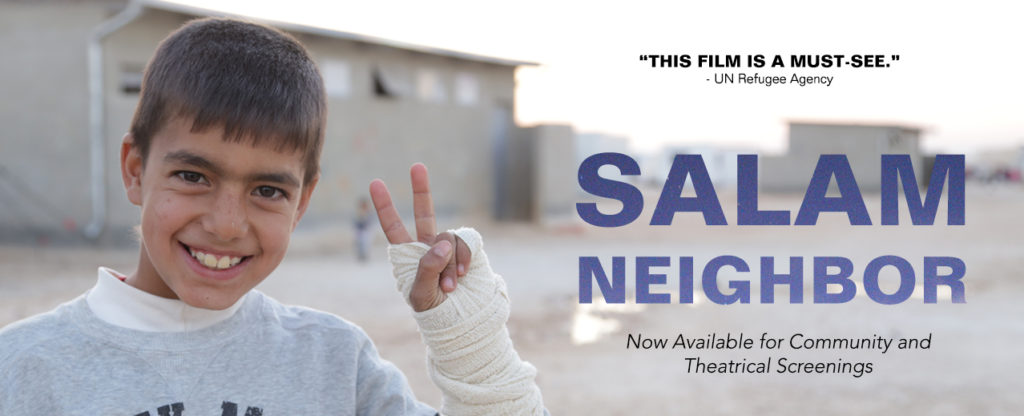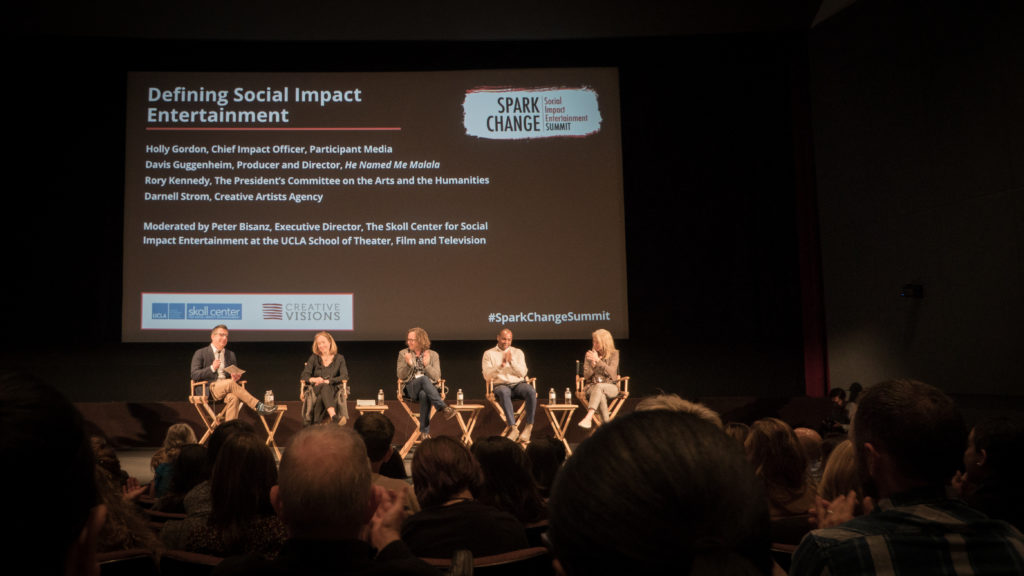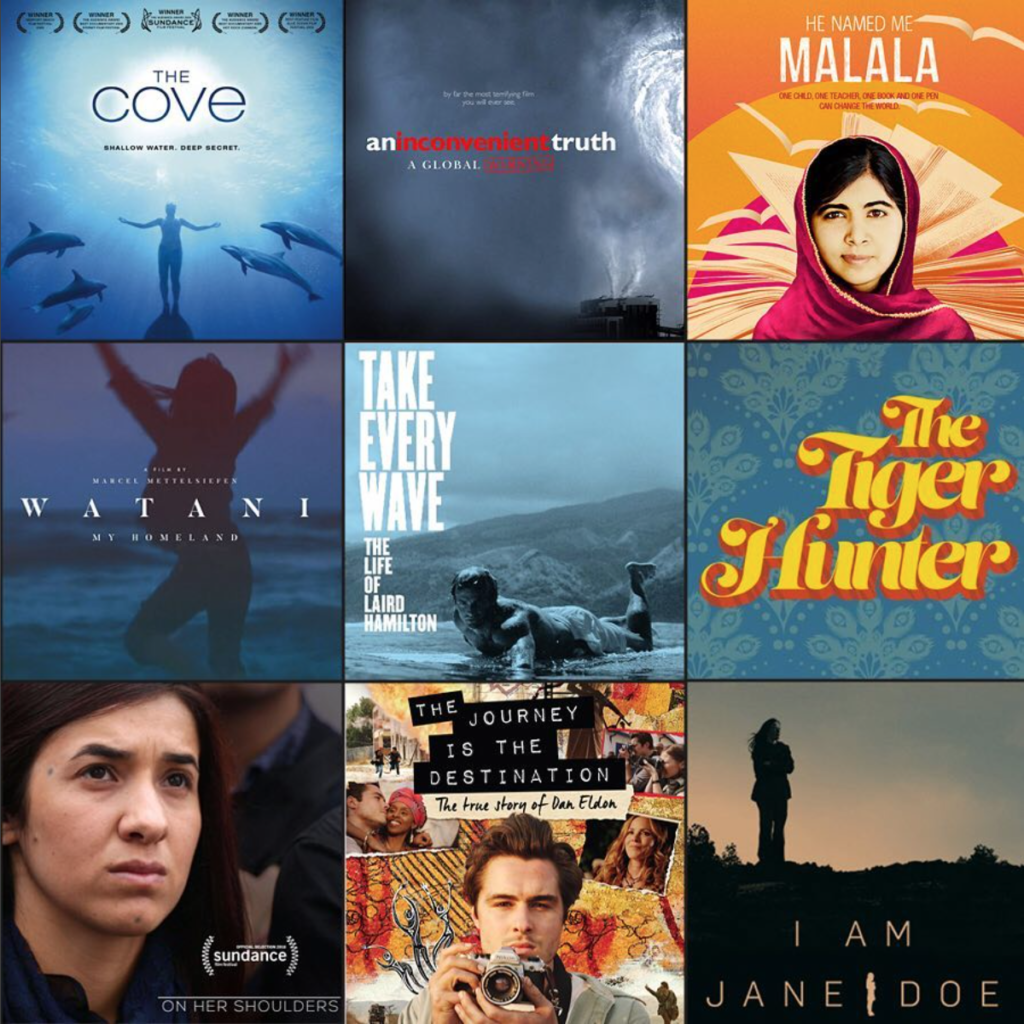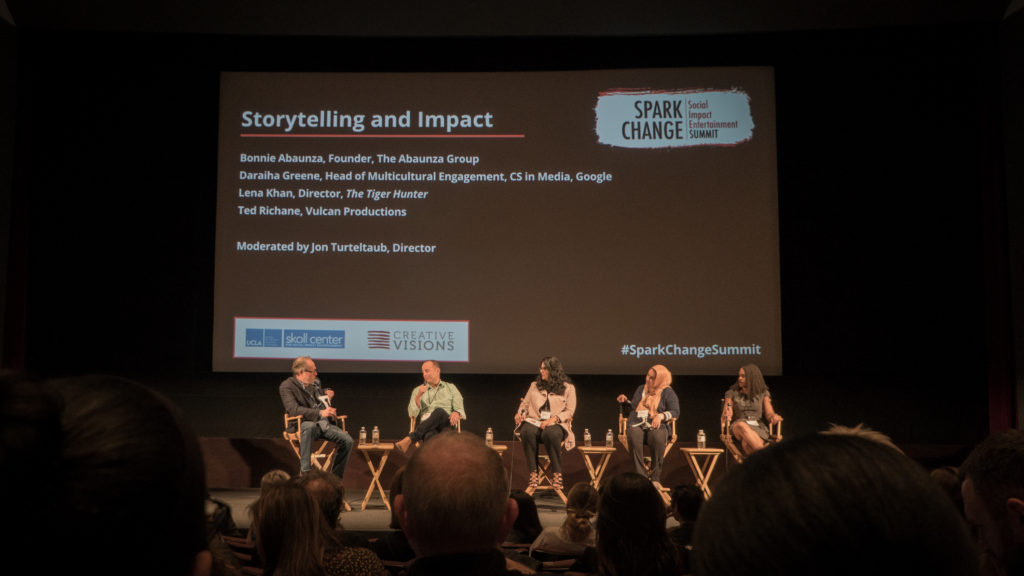Filmmakers
Cinema of Change vs Propaganda

What differentiates a good message movie from a movie that’s too preachy? How does a movie effectively present a point of view without insulting the intelligence of its audience? As a Cinema of Change filmmaker, these are questions I am asking myself more and more.
This year is the 70th Anniversary of Frank Capra’s beloved classic, It’s A Wonderful Life. I confess that even though I consider Capra to be one of the best filmmakers of our time, he often treads a fine line between earnestness and hitting his audience over the head with his message.
But why it is that this bothers me in movies like It’s A Wonderful Life, but less so in a movie like Traffic or All the President’s Men? It comes down to the transparency of the director’s intent. Capra is a master filmmaker, but he also tends to make his point so vehemently that it feels like we’re watching a message being justified, rather than a story being told organically. That is, the argument for a particular ideal, way or life, or way of treating one another feels like a foregone conclusion even before the opening credits.
As long as you’re putting your central idea on trial, rather than dismissing all opposing points of view, it’s a step in the right direction. If you’re stacking the deck in favor of your message, you’re cheating your audience – if you’re stacking the deck against your message, you’re challenging your audience and ultimately hitting deeper truths.
A perfect example of this: Steven Spielberg’s Bridge of Spies, a movie that feels very Capra-inflected in its commitment to a single ideal. Yet at no point are story complexity and character depth sacrificed in the name of that ideal. There are no enemies and no heroes, only people standing up for what they believe in, and therein lays the conflict. It’s essentially a story of one man fighting against the world to uphold essential American ideals during the Cold War, and sure, by the end, the audience has never doubted that he was right all along, but the script sketches all of its characters in shades of grey, so much so that we understand where all of them are coming from and how they are thinking.
Bridge of Spies avoids cliches, tropes, and short-handed writing. It opts to be Cinema of Change and goes the distance to make sure it’s critical and thoughtful. That ultimately is how we avoid making propaganda.
I make films that promote ideas and questions assumptions. I make no apologies for that, but as I understand the many ways that approach to filmmaking can go wrong, I realize how delicate a balance one has to strike in order to do Cinema of Change right.
Filmmakers
What are the challenges of filming a foreign culture?
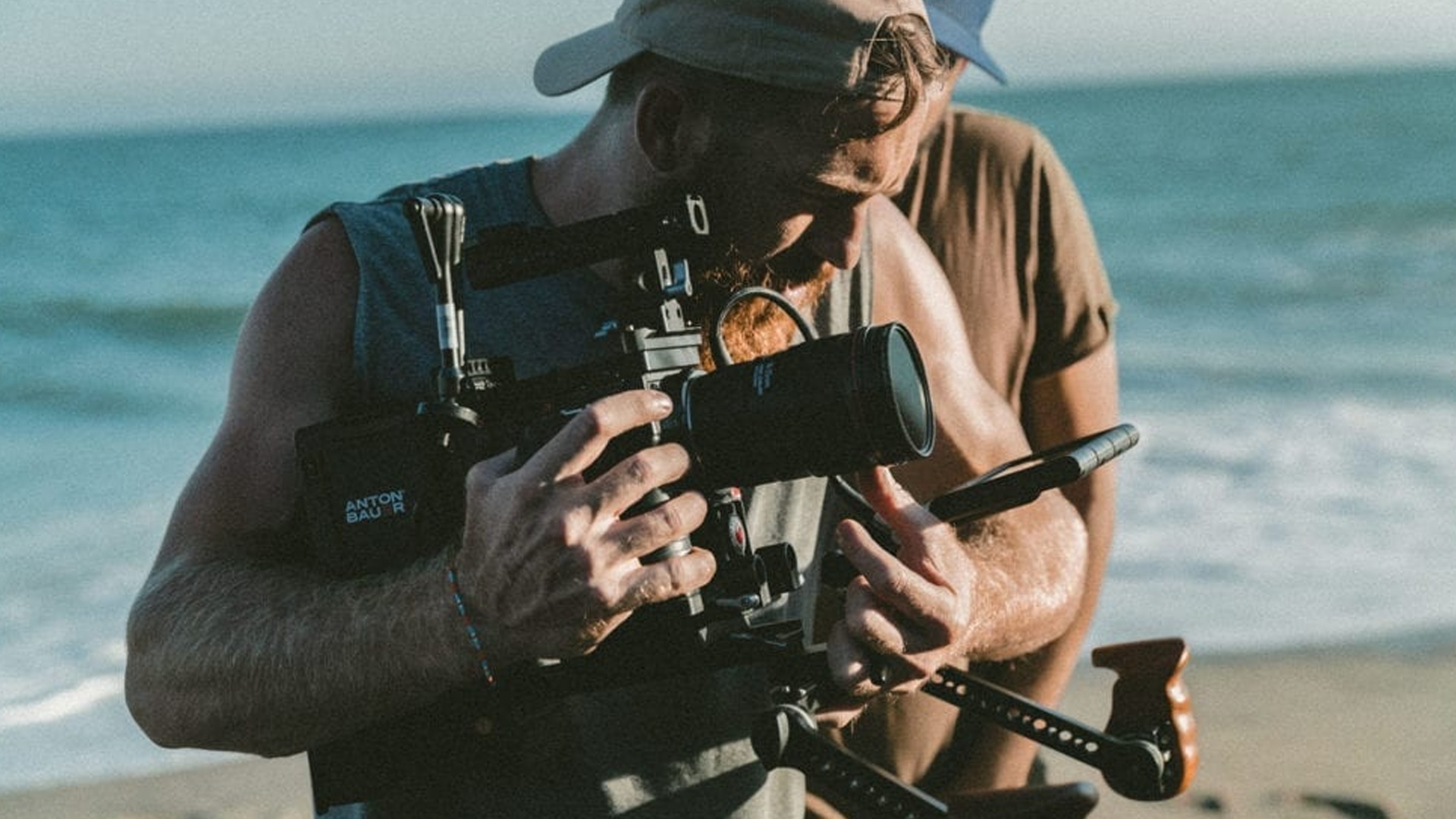
Filming a foreign culture is not like filming your own. There are a lot of challenges that are faced by people to film a foreign culture. One of the basic reasons is that you may not know much about that culture, which will act as a drawback when trying to accurately record it. It is not about the niche of the location, but the reality of it and where that takes us. When you film culture, you must have a great understanding of it. Therefore, you should study it to get a good understanding of the nuances of the culture.
Films have a huge impact on other societies, and if your film lacks the essence of the culture, it won’t be able to give a good impression to your viewers. A lot of people get overwhelmed by other cultures and their uniqueness, most of the times getting an idea about other cultures through film, television, and the internet. Be it culture or any other information, filming has played a huge role in cultivating an impression on the minds and hearts of the people.
Filming Foreign Cultures – A Challenge
Filming in foreign countries is difficult because penetrating deep into the society of any country and culture requires a good understanding of the subject. Having that understanding can alleviate these hurdles.
Seeing the Foreign Culture Through the Eyes of the Camera
Most of us get the an idea of foreign cultures from media representations, this is because we cannot experiences all the worlds cultures for ourselves. That’s why people use social media and other internet platforms to learn about different cultures around the world. That is why whatever you make, people will see, and start believing. Which is why there is a huge responsibility to show different cultures accurately.
Challenges Faced During Filming
When you take ownership of showing the world different foreign cultures, you must make sure that everything is authentic. Made up stories won’t do because they will have a bad impact on the culture but also your credibility. That is why you should try to keep things real and accurate.
Originality
Keeping everything in its original state is the best thing video maker can do. Uniqueness and creativity are acceptable, but when the things start getting faux, the real essence gets lost, which is why it’s important preserve things in their original form.
Money and Finances
For film shooting in foreign countries, a lot of money and financial aids are required. Very good artists don’t get the opportunity to use their abilities because they don’t have enough money to film. For productive and creative filmmaking you need money, if that’s not there the problems are obvious.
Video Making on Demand
If there is a demand for a particular story, everyone will try to make videos on that subject. Sometimes, in these cases, the real story gets hidden. Many times, people do not film what is needed because they re too busy filming what is trending. This affects the film industry and the filmmakers as well.
Lack of Creativity
Lack of creativity is no doubt a huge challenge for the film making industry. Sequels and remakes of the videos are not something in demand and that demeans the meaning of creativity. If you want to make a statement, you must show how creative you are. This will help you get to the limelight in no time.
The film industry is progressing at a very fast pace and with great power comes huge responsibility, that’s what we all need to understand. Admit the fact that what you portray will be saved forever, and that slight irresponsibility can ruin another culture, which should not be the intention of anyone.
This article was written by William Roy, check out his website Movie Trivia
Exchange
For the Everyday Documentarian: From Idea to Impact
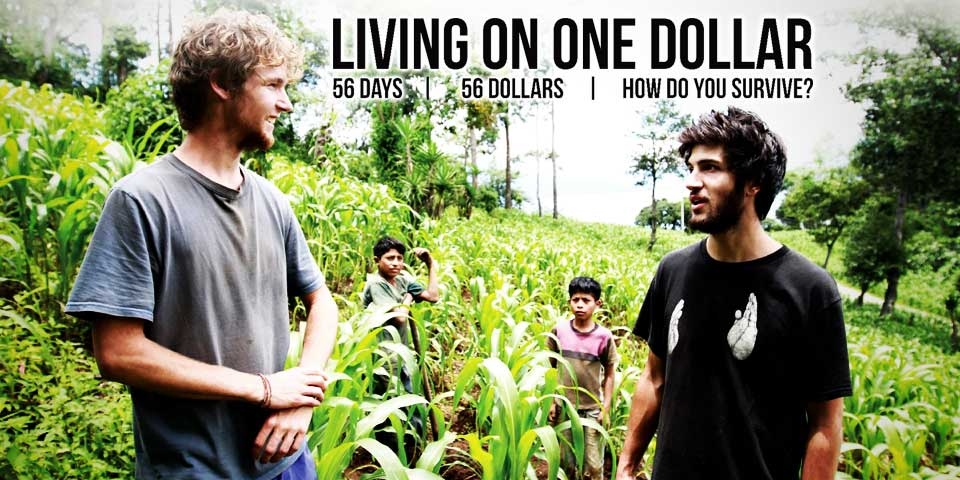
Chris Temple, one of the founders of Living on One, a documentary and impact campaign powerhouse, speaks to Cinema of Change about getting into the social impact entertainment space and what it takes to build a campaign around the film. Their documentaries, Living On One Dollar and Salam Neighbor, explore the pressing issues of poverty and the refugee crisis, and have gone on to create social and political change on an international level. Chris advocates for the everyday documentarian – anyone can and should make a documentary.
How does someone start in the impact entertainment space? What resources do you recommend?
Watch as much content as you possibly can. Follow other filmmakers across social media from diverse backgrounds. Check out No Film School. Start creating even when you don’t know how or doubt yourself! When it comes to making a documentary or any film for that matter, define your goals, audience, and intended change. Think about the primary impact dynamic, which is the #1 thing you want to come out of the film. Remember that filmmaking is a long journey. For Living On One Dollar, there were times when we were exporting version 65 of our cut and wondering how we would ever finish, but you’ll always make it happen in the end. And don’t let the gear hold you back! We filmed both our documentaries on DSLRs with lapel mics and H4N zooms. You don’t need a super fancy camera to tell a good story.
How can someone ensure that they don’t fall into “voluntourism” or have a “White Savior” attitude?
We never started our project with the goal of helping, but instead with a focus on learning. When we first embarked on our trip to Guatemala, we left with the intention of understanding the things we read about in our textbooks. And when we started to create the film, we partnered with organizations that were already doing incredible work on the ground. For example, through our collaboration with Mayan Families, we ensure that our donations go directly towards community development and are used effectively. Also recognize where you can add value, which for us was storytelling. Then, think about how you can support the cause and partner with people that can work in other aspects better than you can.
How do you cope with the emotions that arise during the documentary process?
At one point during our filming of Salam Neighbor, I didn’t want to be on camera anymore because it was an emotional moment. We were encouraging a young boy to go to school, yet later learned that his school had previously been bombed, so he experiences post-traumatic stress in school environments.
We have to recognize our own limitations as filmmakers and aid-makers, and express humility that we don’t have all the answers. The people we interacted with were the ones teaching us. They’re the experts in their own lives. We did experience some guilt coming home, almost reverse culture shock at our entitlement and culture of consumption, but guilt is not a productive emotion. It doesn’t create change; it just makes you feel worse, so how can you channel that feeling into action and creativity?
Recognize that the people you film with are people. Show the film to them before you release it online. Make updates. Continue building that relationship.
How do you overcome the fear of facing controversial subjects?
We were definitely nervous before entering the refugee camps, but realized that that stemmed from our implicit bias towards the Middle East and refugees from media and news. Of course, we sought advice from war journalists and had a 35-page security protocol, but never once did we feel unsafe.
How do you approach building a social impact campaign?
Any good impact campaign evolves from your story because the story is what people see and are moved by. Read impact guides like the one from AFI Docs Impact Lab or the Impact Field Guide. For Salam Neighbor, we focused on individualizing the refugee crisis and targeted communities that had huge refugee populations, yet weren’t really engaging with them, such as in Nebraska or Dallas Fort Worth, especially those places that were more conservative in their views of refugees. With 1001 Media, a fellow producer on the film based in the Middle East with cultural knowledge and historical perspectives, we launched an educational guide and are implementing that into the Common Core curriculum. We’re reaching out to teachers that we’ve worked with in the past and are hosting screenings as well.
How do you build partnerships with many of the development-based organizations and non-profits both in the United States and in the countries you work with? How do you approach such a collaboration?
The hardest part is starting out because you don’t have much credibility or a track record. You may only occasionally receive a reply, but listen as much as possible to those individuals who are willing to give advice. We actually connected with one of our mentors by just tweeting him again and again until he responded and agreed to watch our trailer. It’s a numbers game in some ways, but once you do hear back, prove that you’ve done your homework and are serious in what you’re asking. Have a specific question and show that you’ve gotten as far as you can without the extra help.
What has been the most difficult part of building the campaigns for Living On One Dollar and Salam Neighbor?
Finding the finances. Investors usually see a more direct reason to support a film versus an impact campaign. But slowly, we’re proving to funders that a national tour or building a curriculum is worth the time. Living On One Dollar was released years ago, but just last week, we ran a fundraiser to sponsor a new preschool in the community there. Our ongoing engagement with the community is very important to us. These stories and the impact we can make don’t end when the credits roll.
Out of curiosity, how has For My Son been doing? Do you see a difference in reach between VR and traditional film?
For My Son is most effective in person, which is why we brought it on tour and presented it at over 750 screenings as a VR exhibit. It’s currently an exhibit at the U.S. Holocaust Memorial Museum! The technology for VR isn’t quite there yet to leapfrog into creating successful documentaries, but at the end of the day, it all depends on your goal.
What is coming up next?
We do have a feature documentary in the works that is inspired by individuals from previous films, kind of like a Boyhood, journey-of-their-lives style film. Stay tuned on our social media handles, @LivingonOne, as we will be providing teasers and more information soon!
Thank you, Chris, for speaking to Cinema of Change about your experiences with impact filmmaking. We hope audiences find this insightful and empowered to begin their own projects. As always, feel free to contact CoC or Living on One for advice, but remember to do your homework first!
Companies
Social Impact Filmmaking: The How-To

“Social impact entertainment’s time has come,” Teri Schwartz, the dean of UCLA School of Theater, Film, and Television said as she welcomed everyone to the first Skoll Center summit. Nonprofit leaders, social campaign strategists, experts in distribution and funding, and a variety of creators gathered to define social impact entertainment, learn more about storytelling, and discuss new distribution and funding models.
Students and professionals alike joined in the conversation thinking about questions like: Is intention enough? What is the difference between storytelling and advocacy? What are examples of previously successful social impact campaigns and how can we follow those models? In this time of mass streaming platforms, how can artists market their social impact content and demand awareness?
The social impact entertainment field is developing, but very much alive. However, unlike industries that sometimes hide information to maximize self-growth, it is critically important for us to collaborate in this space and build a community of entertainment activists. Cinema of Change sent several to this summit to do exactly that: share what we’ve learned and be honest about what we don’t know yet.
So, what’s the secret sauce? How can films change the world?
Truth is, like the entertainment industry itself, there is not one path to ending climate change or human trafficking through film (unfortunately, I know). However, whether it is documentary, narrative, or docu-fiction, everything begins with storytelling.
-
STORYTELLING
No matter how important the statistics are or how beautiful the production design is, people are not going to watch a film that has no story. Sometimes, that is why a narrative film may even have a larger impact on a social issue than a documentary film because people relate and empathize to the fictional characters more and will walk away with those emotions in mind.
Holly Gordon, Chief Impact Officer of Participant Media: There’s a difference between storytelling and advocacy. Storytelling comes 100% from intention, but also creativity. “Creativity means intention and the ability to tell a story.” And that’s what leads to transformational change, which is long-term and visionary, compared to transactional change.
Hayley Pappas, Head of RYOT: As a reminder, “It doesn’t always have to be heartbreaking to be transformative. You can laugh a lot and see something in a new way.”
Davis Guggenheim, director of An Inconvenient Truth and He Named Me Malala: “Without the intention, you’re not going to do it. It’s too hard.” Documentaries can hit a wall sometimes because everyone working is so passionate about the topic, but when you go into the editing room, there’s no story.
As much as we support documentaries here at Cinema of Change, we also believe that mega blockbusters and social impact are not mutually exclusive. In fact, we wrote an article on exactly why we think the opposite here.
Darnell Strom, Creative Artists Agency: “Story matters. Representation on screen matters and that has a ripple effect.” Sometimes, filmmakers may not set out to have a specific intention, yet organic social issue campaigns arise from a great story. Take Black Panther for example. Disney probably did not set out to create a transformative piece about black culture through a Marvel comic book story, but the film had a majority black cast and depicted a woman leading the technological developments. Now, nonprofits are jumping up about women in STEM and young black boys and girls can watch the film and be like, Hey, if someone who looks like me can do it, so can I.
-
MEASURING SOCIAL IMPACT
Great, this film tells an incredible story about a disadvantaged youth rising from poverty and attending a prestigious university, but how do we measure the social impact? In other terms, how do we calculate the number of minds changed, or decisions made to take action? Even Gordon agreed that transformational change is very hard to measure, but it can be done.
Holly Gordon: For Girls Rising, which is both a film and nonprofit about the importance of educating young girls, measurement meant hiring Mission Management to analyze impact in three ways: changed minds (reach), changed lives (money raised), and changed policy (shifts in government policy). Gordon worked on relationship building with a number of nonprofits and even leaders like Michelle Obama to develop impact partnerships and shape campaigns around the themes in the documentary, before a single frame was even shot.
Rory Kennedy, director of Last Days in Vietnam and Ghosts of Abu Ghraib: Social impact is often thought of in large numbers: raising millions of dollars, changing thousands of lives, but it is also just as important on an individual level. For example, in Last Days in Vietnam, Stuart Herrington, a counterintelligence officer in the Vietnam War, was responsible for safely evacuating American soldiers at end of the war, but he knowingly left 422 Vietnamese soldiers there despite promising them safety. At the premiere of the documentary, Harrington reflected on his guilt and regret for leaving all those lives behind and said that he dreaded ever meeting one of the 422. Sure enough, one of the Vietnamese soldiers Harrington left walked up on stage and told him, “I forgive you.” That moment left both of the men in tears and it may not have changed a hundred lives, but it changed two.
-
IMPORTANCE OF SOCIAL IMPACT CAMPAIGNS
When a film wraps, the awareness and campaign work most definitely does not. Social impact campaigns are critical to accelerating awareness and creating a sustainable, lasting effect. They’re arguably more effective when launched before the film even begins production.
Bonnie Abaunza, founder of The Abaunza Group which has launched campaigns for The Hunting Ground, Hotel Rwanda, Cries from Syria: These impact campaigns are designed to intersect all industries and companies. Impact comes from educating students, mobilizing ambassadors, challenging companies, and partnering with nonprofits and policy leaders who care. One example of a highly successful social impact campaign is the one for Blood Diamond. Lena Khan, the director of The Tiger Hunter, even told Abaunza that she has a conflict-free diamond on her hand because of the film. Jewelry companies like Tiffany & Co. joined the movement by labelling their diamonds as “conflict-free” especially because more and more people started asking about it. Amnesty International created an entire curriculum to introduce the issue to students.
Ted Richane, Vulcan Productions Impact and Engagement: At the end of the day, “We can have our strategies, but the best thing we can do is listen. The community is awesome and going to be inspired and go to take the issue upon themselves.” That’s the ultimate goal, right? Launch the campaign, tell the story, and empower others to share and do something about it all.
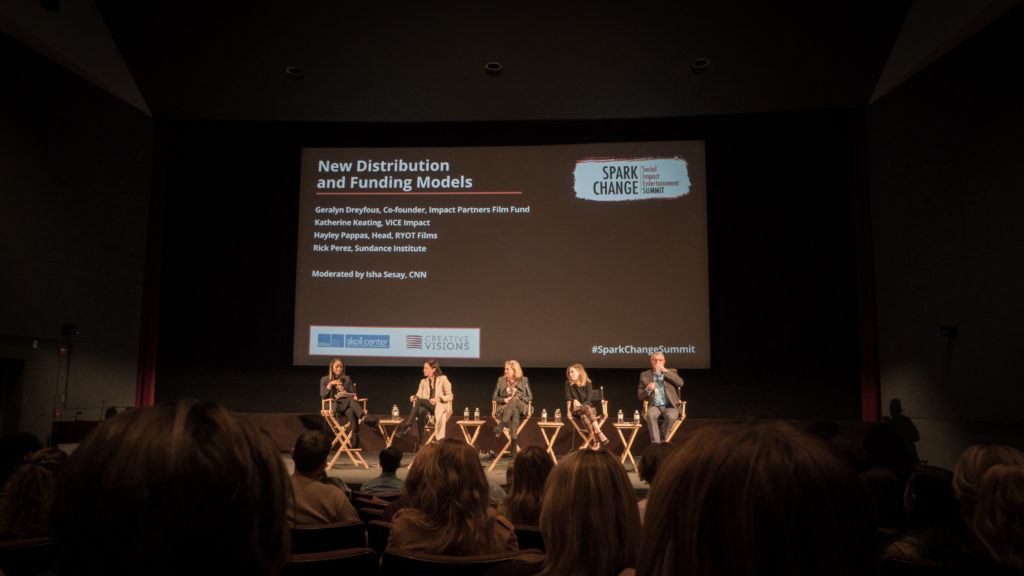
-
DISTRIBUTING AND FUNDING SOCIAL IMPACT FILMS
The world of distribution and funding can be quite daunting to enter, because no matter how passionate someone is, it is always difficult to get the money needed to transform passion into action. Major companies are also a huge part of the conversation. How do they decide what films to green light? How can indie artists break out with both an entertaining film and one that creates change?
Geralyn Dreyfous, Co-founder of Impact Partners Film Fund: There is a shift nowadays in the distribution world. Only two films sold at Sundance this year. Netflix is commissioning their own content. Companies are not paying their creators enough, especially for short form content. To the artists: “You love it so much, you’d do it for free. But you have to stop doing it for free.” When starting out with trying to find investors, you can always pitch to the Impact Partners Film Fund, but if you’re not successful there, think about incentives and break up your budget into smaller chunks for financing. Can you give donors credits, on screen thanks, private screenings, and other benefits? “Mostly, founders are interested in amplifying and aligning your content with their philanthropic goals. They need to know that you’re the person to tell that story.”
Katherine Keating, Vice Impact: With a cross-platform company like Vice, it’s very important to think about who the audience is and where they are consuming their content. Some things are meant to be a series of five 1-minute shorts on Facebook, even though the artist may have pitched it as five 1-hour series. Another way to integrate the impact campaign is through brand partnership with large, respected companies. For example, Colgate, one of the biggest toothpaste sellers, is now promoting water conservation and looking at ways to reduce plastic use in their packaging. Companies are starting to recognize the importance of social impact and it’s our job as their commercial creators to push them in that direction.
Cinema of Change previously interviewed entertainment attorney Mark Litwak about the “Filmmaking Pitfalls in Deal-Making and Distribution”; read what Litwak has to say here.
NOW WHAT?
“To create in this chaotic world peace, to seek in this gathering darkness light, to transform the hatred into a new kind of loving. Together, we can transform this world. It’s going to be really hard. But we can do it, and it will be through storytelling and courageous people like you.” (Kathy Eldon, Co-founder of Creative Visions). With that, the SPARK CHANGE Social Impact Entertainment Summit came to end, but our work is just beginning.
As audiences, we have to demand for content that does not further marginalize communities and perpetuate stereotypes.
As companies, we cannot stay silent to the injustices in our world in order to protect our brand.
As filmmakers, we are not just producing beautiful, cinematic pieces. We have the responsibility to use those creations to spark change.
—
List of all organizations in attendance: Cause Cinema, CNN, Creative Activists Network, Creative Artists Agency, Creative Visions (co-host), Google, I am Jane Doe, Impact Partners Film Fund, Living on One, Majority Film, Participant Media (sponsor), President’s Committee on Arts and Humanities, RYOT, Skoll Center (co-host), Sundance Institute, The Abaunza Group, Vice, Vulcan Productions (sponsor) UCLA School of Theater Film Television
*Sayings in quotation marks are directly quoted. Other remarks are paraphrased.
-

 SIE Magazine10 years ago
SIE Magazine10 years agoWhat Makes A Masterpiece and Blockbuster Work?
-
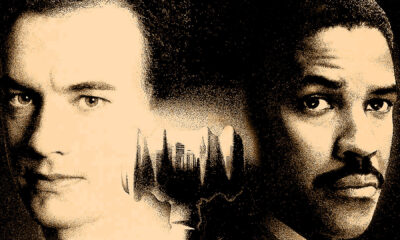
 Filmmakers10 years ago
Filmmakers10 years agoFilms That Changed The World: Philadelphia (1993)
-

 Companies7 years ago
Companies7 years agoSocial Impact Filmmaking: The How-To
-
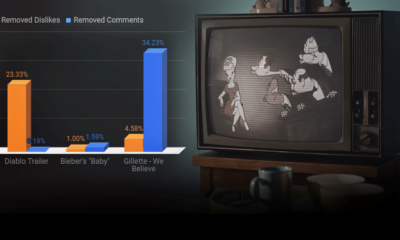
 Media Impact6 years ago
Media Impact6 years agoCan We Believe The Gillette Ad?
-

 SIE Magazine10 years ago
SIE Magazine10 years agoDie Welle and Lesson Plan: A Story Told Two Ways
-

 Academia9 years ago
Academia9 years agoFilmmaking Pitfalls in Deal-Making and Distribution
-
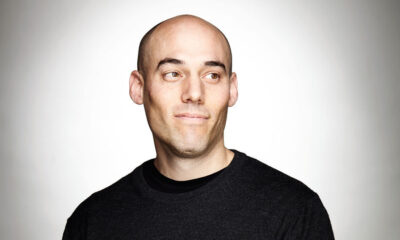
 Academia9 years ago
Academia9 years agoJoshua Oppenheimer: Why Filmmakers Shouldn’t Chase Impact
-

 Filmmakers10 years ago
Filmmakers10 years agoMirror Mirror: An Exploration of Self-Awareness in Recent Hollywood Films



